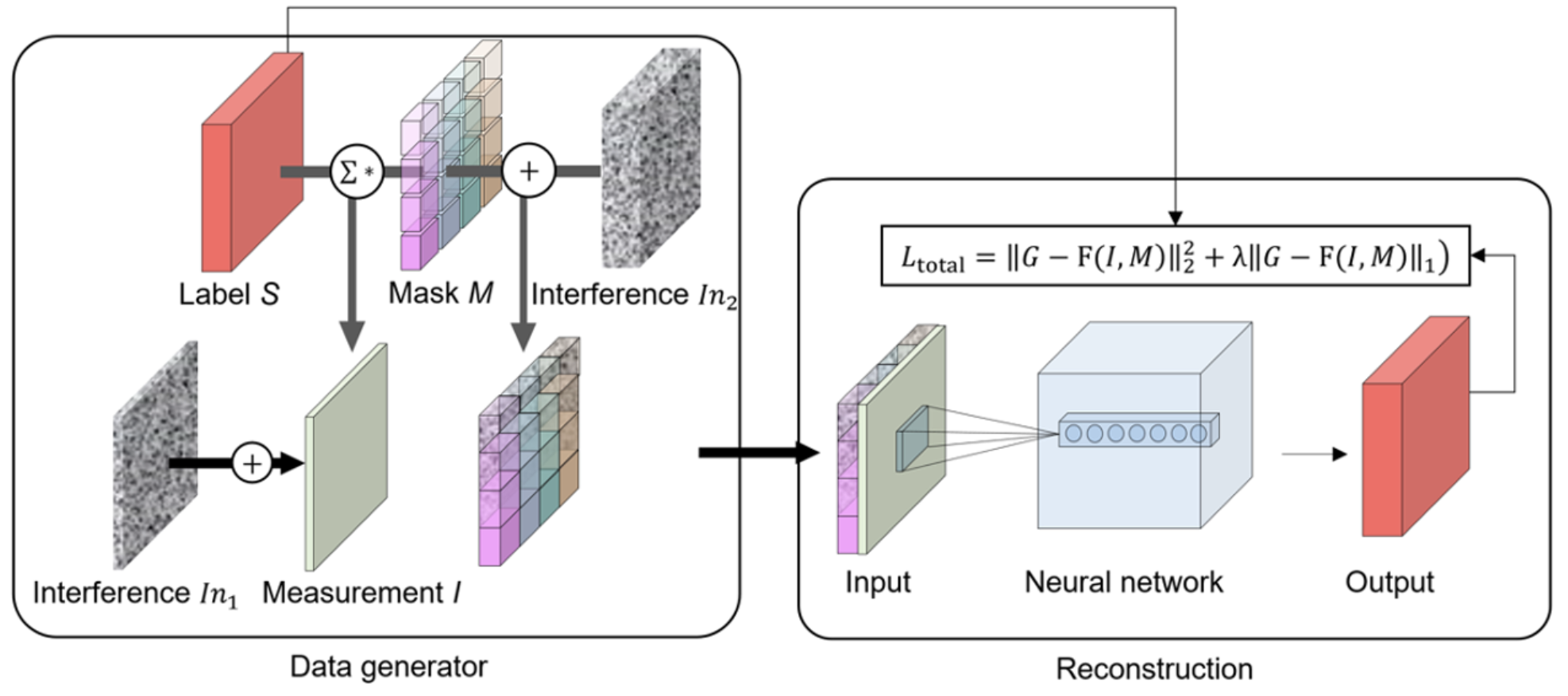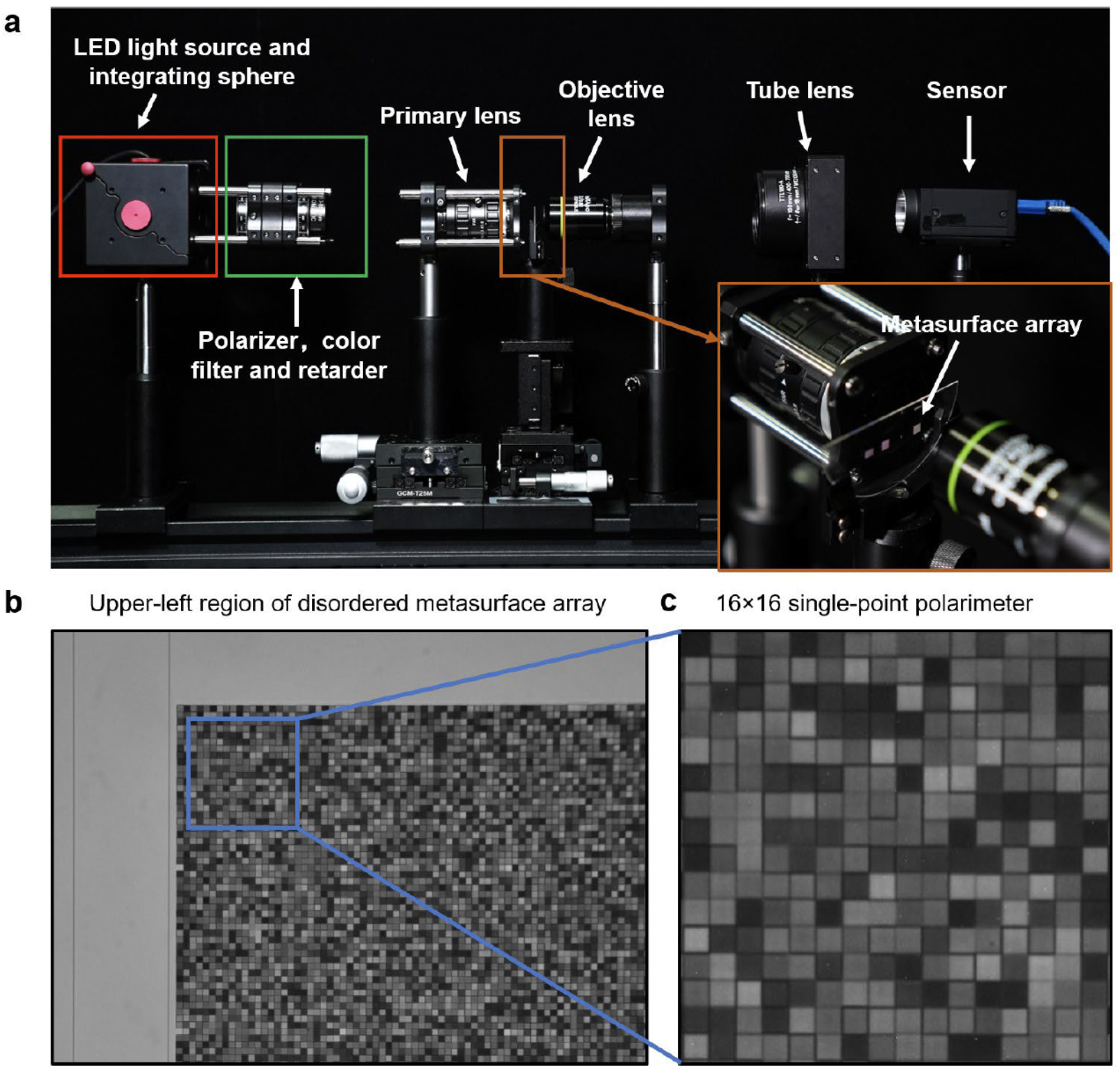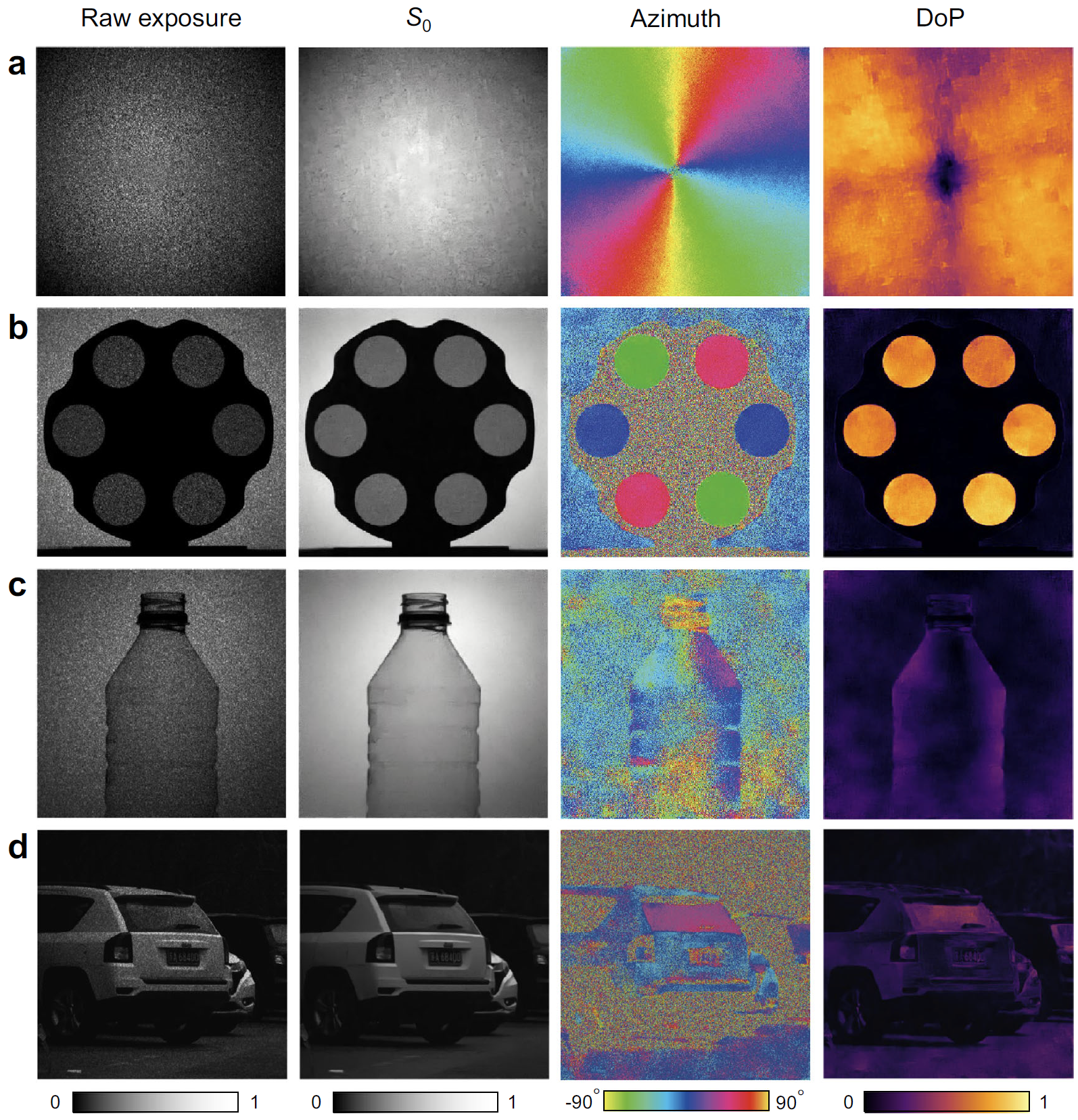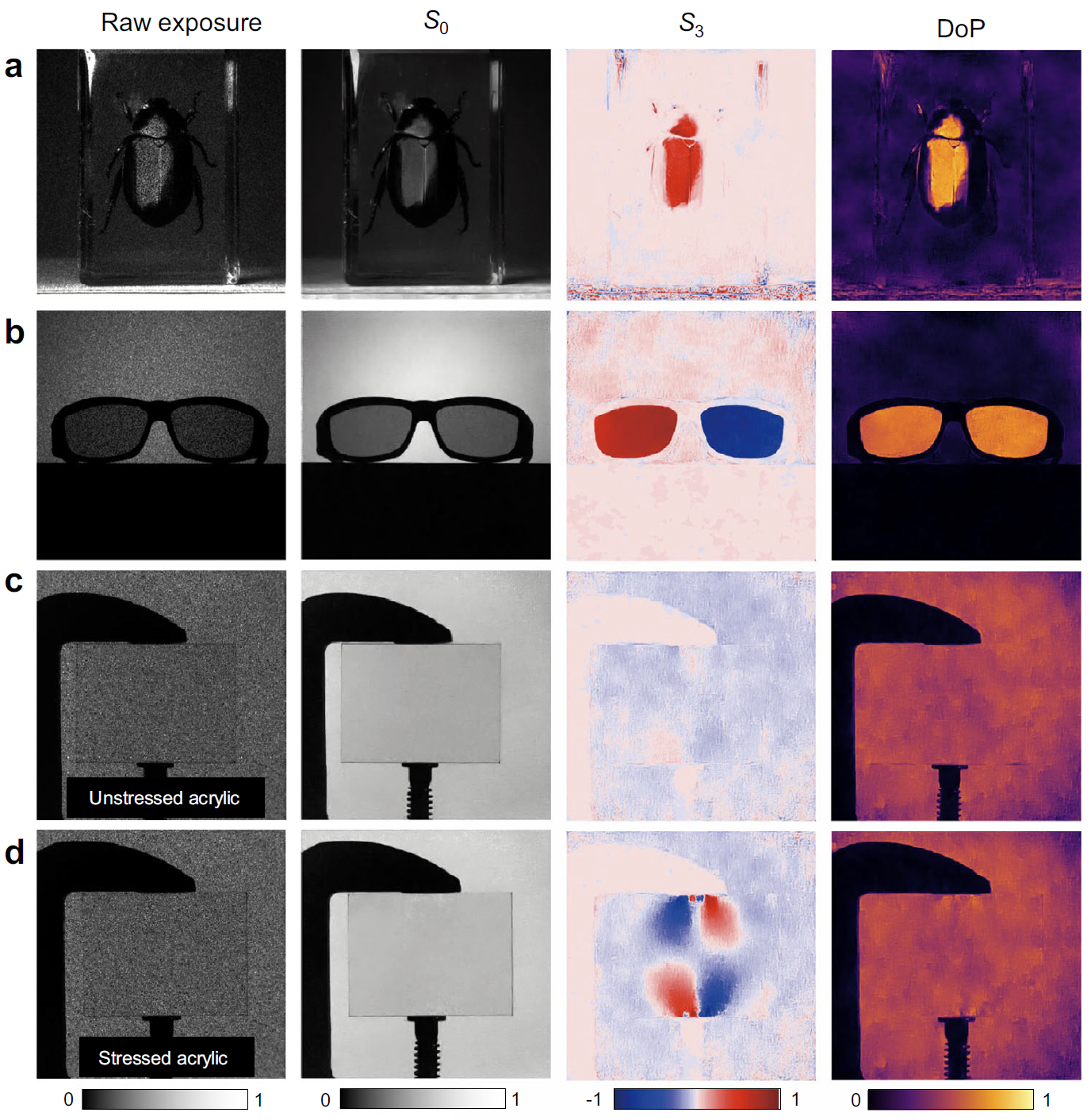Abstract
Polarization, one of the fundamental properties of light, is critical for certain imaging applications because it captures information from the scene that cannot directly be recorded by traditional intensity cameras. Currently, mainstream approaches for polarization imaging rely on strong dichroism of birefringent crystals or artificially fabricated structures that exhibit a high diattenuation typically exceeding 99%, which corresponds to a polarization extinction ratio (PER) >~100. This not only limits the transmission efficiency of light, but also makes them either offer narrow operational bandwidth or be non-responsive to the circular polarization. Here, we demonstrate a singleshot full-Stokes polarization camera incorporating a disordered metasurface array with weak dichroism. The diattenuation of the metasurface array is ~65%, which corresponds to a PER of ~2. Within the framework of compressed sensing, the proposed disordered metasurface array serves as an efficient sensing matrix. By incorporating a mask-aware reconstruction algorithm, the signal can be accurately recovered with a high probability. In our experiments, the proposed approach exhibits high-accuracy full-Stokes polarimetry and highresolution real-time polarization imaging. Our demonstration highlights the potential of combining meta-optics with reconstruction algorithms as a promising approach for advanced imaging applications.
Method
Operational principle
The operational principle of the nanophotonic polarization camera consists of three steps: calibration, capture, and reconstruction. (a). Schematic of the calibration process. 1.denotes a narrowband spectral filter. 2.denotes an imaging lens. (b). The responsivity matrix $R$ of the whole meta-device is calibrated from the photoresponses to the three pairs of orthogonal SoPs of incident light. (c). Schematic of the capture process. Scattered optical waves at each position $(x, y)$ of target scene represented an unknown SoP $S = [S0,S1,S2,S3]^T$, illuminates the imaging system. (d). A single-shot capture process generates the polarizationencoded image $I$. (e). Mathematical description of the relation between $S_v$, $I_v$, and $Λ$. (f). SoP reconstruction by the convolutional neural network. (g). Reconstructed SoP and corresponding position on Poincaré sphere.

Network architecture:
The framework of the reconstruction algorithm. The reconstruction process is divided into two steps, the polarization data generator and the full convolutional neural network. $Σ∗$ represents the forward imaging process, i.e., the label (or the target full-Stokes polarization image) first point-wise multiplies the polarization transmission matrix $M$, then integrates over the polarization dimension. The interference $𝐼_{𝑛1}$ corresponds to the noise in image system and the interference $𝐼_{𝑛2}$ is used to simulate the calibration errors in transmission matrix $M$. Through adding these interferences during the training process, the trained neural network could be robust to noise interferences existed in the imaging process.

Experiments
Optical setup
(a) The optical setup for the polarimetric measurements. The red box is the LED light source and the integrating sphere. The uniform LED light is emitted from the integrating sphere and then enters the system through the linear polarizer, color filter and retarder successively. By rotating the angle of the polarizer and retarder, arbitrary SoP can be generated. The inset shows the disordered metasurface array (shown in orange box). (b-c) In our experiment, we selected a $16\times16$ subarray located in the upper-left region of the device to conduct the polarization measurement.

Results on azimuth and DoP
Full-Stokes polarization imaging. Indoor (a–c) and outdoor (d) photography with the proposed metasurface camera. In each case, the raw exposure (corresponding to the polarization-encoded image, or called compressed image), $S_0$ (corresponding to the monochrome intensity image), the azimuth of the polarization ellipse and the degree of polarization are shown.

Results on $S_3$
Polarization imaging of $S_3$. In each example, raw sensor acquisition, $S_0$, $S_3$ and DoP are shown. (a) Biological specimen. (b) 3D glasses consist of opposite circular polarization filters. (c) A rectangle acrylic piece is not stressed by the clampsqueezing and displays no stress-induced birefringence in the $S_3$ image. (d) The rectangle acrylic piece is stressed by clamp-squeezing and displays stress-induced birefringence in the $S_3$ image.

Results at different wavelengths
Polarization imaging at different wavelengths in the visible spectrum. Linear (a) and circular (b) polarization imaging with the proposed camera. The raw unprocessed exposure, $S_0$ (corresponding to the traditional monochrome intensity image), the azimuth of the polarization ellipse, and $S_3$ are shown. Illumination was provided by LED which passes through a 10 nm bandpass filter.

Results on $S_0$
The reconstructed intensity image $S_0$ of the pixel-level scene. The car plate is scaled into the red box. The numbers on car plate are only one or two meta-pixels in width and can still be reconstructed clearly.

More Details
Bibtex
@article{Fan2023DisorderedME,
title={Disordered metasurface enabled single-shot full-Stokes polarization imaging leveraging weak dichroism},
author={Qingbin Fan and Weizhu Xu and Xuemei Hu and Wenqi Zhu and Tao Yue and Feng Yan and Peicheng Lin and Lu Chen and Junyeob Song and Henri J. Lezec and Amit Agrawal and Yan-qing Lu and Ting Xu},
journal={Nature Communications},
year={2023},
volume={14},
url={https://www.nature.com/articles/s41467-023-42944-6}
}